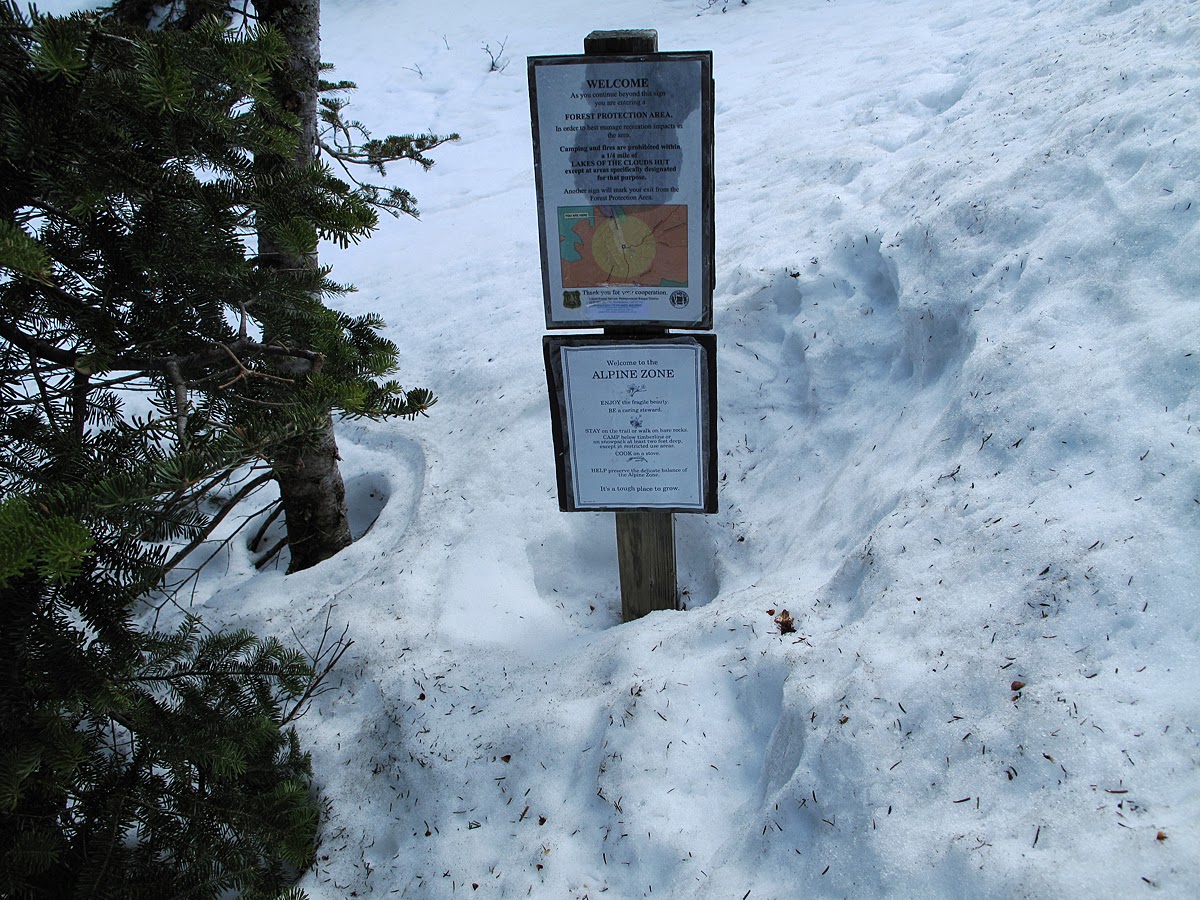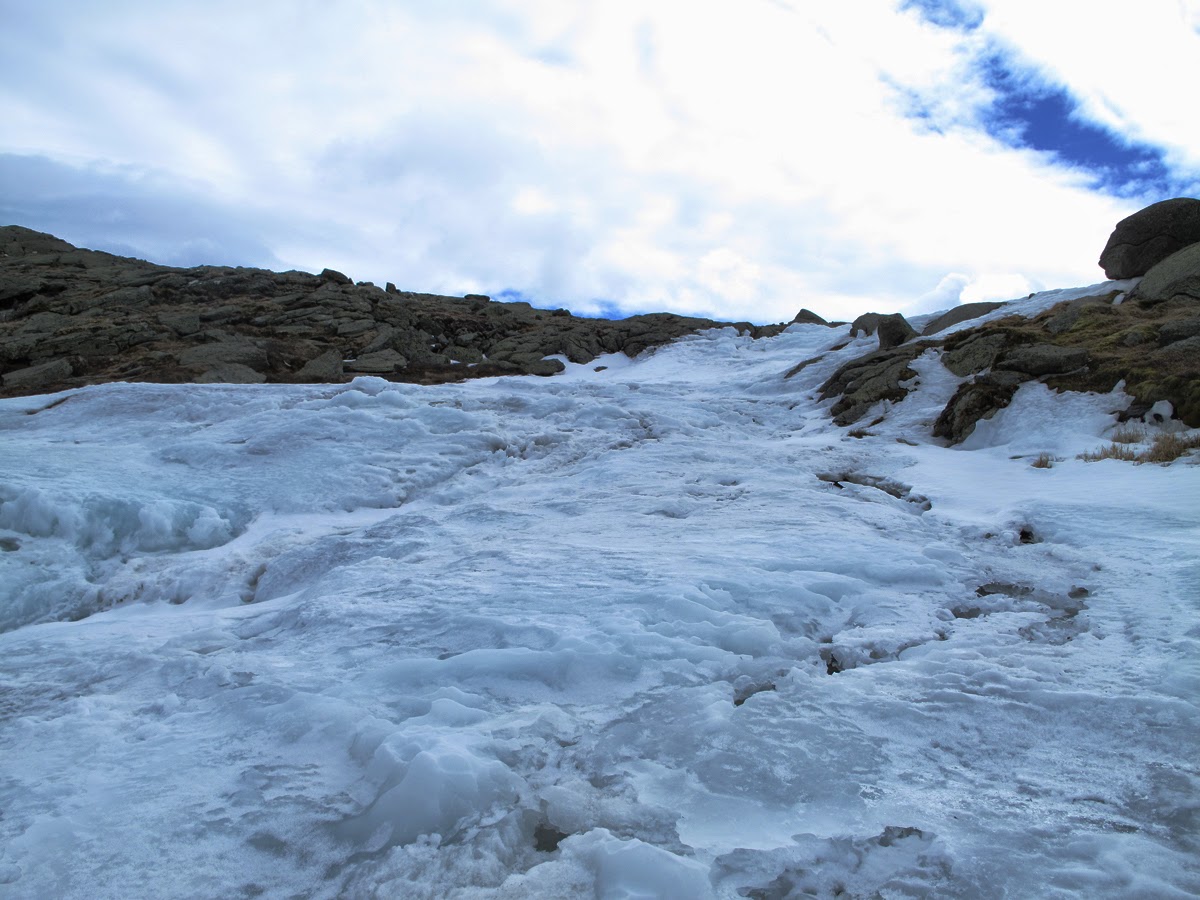Turbulence in Nineteen Mile Brook upstream a quarter mile from Rt. 16.
Anyway, I was my indecisive self on Sunday morning and couldn't decide where I wanted to hike. I thought about Carrigain but from experience knew that after the heavy rains the lower 2.5 miles of the trail would be exceedingly wet, not to mention two stream crossings. I also thought about Mt. Nancy but the lower half, along the old logging road, would also be wet and muddy.
Anyway, I was my indecisive self on Sunday morning and couldn't decide where I wanted to hike. I thought about Carrigain but from experience knew that after the heavy rains the lower 2.5 miles of the trail would be exceedingly wet, not to mention two stream crossings. I also thought about Mt. Nancy but the lower half, along the old logging road, would also be wet and muddy.
Stream flow spreading out over ledges next to the trail, dissipating energy.
The Nineteen Mile Brooks Trail is fairly level for a quarter of a mile then climbs steadily on solid ground, with a few exceptions, up to the Carter Dome Trail junction. Carter Dome's west flank is steep and water runs off it quickly particularly when the soil is saturated which was the case. So I choose the familiar loop of going up and around clockwise Mt. Hight, then Carter Dome, and exiting via Carter Notch.
Nineteen Mile Brook Trail, up to the junction just mentioned, keeps close proximity to the brook which is one of the trail's charms even when its in flood. Like the Ammy, the older Gale River Trail and the Zealand Trail there's an interweaving of the river's "song" with the rhythm of hiking, along with the light and the wind in the leaves.
A solid section of the Nineteen Mile Brook Trail just below the trail junction. I'll say more below but this trail and the trailup to Zeta Pass, Carter Dome, Mt. Hight and down to Carter Notch was phenomenally popular in the late 1800s and early 1900s. There were complaints back then that the birch bark lean-to style shelter at Carter were too crowded both summer and winter. The same was true for Madison Spring Hut on Mt. Madison, also a popular destination in the late 1800s.
 |
| Who remembers the name of this ubiquitous shrub? |
Southwest shoulder of Carter Dome through the trees. There are limited views from Nineteen Mile Brook Trail when the foliage is out. In the fall and winter there are superb sunsets with Mt. Adams and Madison in the background. The lack of views from the lower trails is more than compensated by the astonishing views from Mt. Hight and, to some extent, from Carter Dome in this "loop". There are several trail loops in the Whites. "Loop" means a trail, or series of connecting trails, that started at either end will bring you back to the starting point--so there is no need to "spot" your car, hitch hike, etc.. The Carter Dome-Carter Notch loop is roughly 10 miles in length as is the more famous loop over Franconia Ridge from Lafayette Place.
The north branch of the Nineteen Mile Brook Trail at the junction of the Nineteen Mile Brook Trail and the Carter Dome Trail. The sun was still trying to get over the ridge. Looking west through the tree tops I could see the summit of Mt. Washington bathed in bright sunlight. Nineteen Mile Brook is in the Androscoggin River watershed. Pinkham Notch is the divide between the Saco River and the Androscoggin River. Both of these rivers flow to the Atlantic Ocean in Maine.
The first official AMC exploration of Carter Dome and Carter Notch was written up by William G. Nowell Charles E. Lowe (of Lowe's Path fame), and Dr. F. I. R. Stafford of Montreal in Appalachia Vol. 1, #2, (p. 76) in the summer of 1876. They hiked into Carter Notch from the south following the Wildcat River using information received from a George N. Merrill, of Jackson, a hunter and fisherman who knew the mountains well and who built a sturdy, birch bark lean-to near the site of the present AMC Carter Notch hut in which the trio slept. The following day they climbed the route of the present Carter Dome Trail, up past Pulpit Rock (Nowell referred to it as "Diamond Rock" due to its shape), and then on to the summit. They no idea if they were the first to summit Carter Dome (it probably felt like it), but they certainly enjoyed the views until clouds descended obscuring the view and they returned to the Notch. That was just the beginning.
At about 3,400 ft in elevation the transition to fir-spruce is noticeable. The Carter Dome Trail, after leaving the Nineteen Mile Brook Trail, ascends gently up into a bowl-shaped area that was heavily logged about 100 years ago and all the old growth Spruce was removed and the birches took over. This is true of the forest on either side of Nineteen Mile Brook as well. In the early 1960s you could make out where the old logging camps were by the clearings. Today it feels like a sanctuary after the havoc caused by the logging.
The idea of a sanctuary is not that far fetched as one ascends further up the trail. A couple of tricky stream crossings make one feel cutoff from the world below and the landscape is gentle and inviting.
On Saturday the sunlight crept quietly into the forest highlighting the soft colors that were more typical of early April which it still is at this altitude. Leaf buds were tentatively emerging.
The sunlight became buttery.
Third crossing was a bit sketchy if you were trying to stay dry and it involved hopping, teetering and jumping--like in a decathlon or steeple chase.
 |
| One of the switchbacks cutting across the steep upper slope of the Carter ridge. |
The ancient bench at Zeta Pass. This has been here for ages and it dresses up Zeta Pass considerably, like a welcome mat, and in spite of its appearance, its quite comfortable.
Zeta Pass is a unique feature of the Carter ridge. It's a broad saddle located between Mt. Hight and South Carter and nearly level. It covers several acres evenly wooded with balsam fir and red spruce and is always a hold out for snow until late May.
Mt. Height? The distances are a bit off as well.
From Zeta to Hight the trail is straight and steep, like an escalator.
Snow leaving the woods.
The Northern Presidentials: Mt. Washington (L), Jefferson, Adams and Madison (R.)
Close up: Jefferson (L), Adams (Center) and Madison (R).
Mt. Washington in a perfect pose. Still lots of snow in Tuckerman's and on Hillmam's Highway.
Carter Dome on the left with the Sandwich Range in the distance and Tuckerman Ravine on the right.
The Carters running north with middle looking the highest.
The land of my youth--the East Branch of the Saco River (Slippery Brook) drainage area with Mt. Kearsarge (Peqawket) in the center-left distance, Double Head in front of that and the Moats to the right, and Chocorua. I lived, as a youth, at the base of Kearsarge. Pretty much everything in the photo. including the summit of Carter Dome, was my backyard and playground. In the 1950s there were wildcats, lynx, porcupines, deer, black bear (lots of them--much more than there are now), fishers (I referred to these as "fisher cats") and occasionally we would be surprised by a cougar. Usually cougars moved out of our consciousness. They were invisible. If you were lucky enough to see one it was just the tip of the tail disappearing (as stealthy as they are). The Saco was a great river for trout fishing as was Wildcat Brook and Mountain Pond.
The Ossipees are in the distance behind the Moats. Interestingly, there are some showers behind Kearsarge that were part of a small cold front over on the Maine side. I slept on some soft sand on top of Mt. Hight for a half hour. It's one of the loveliest spots in the Whites; a perfect place for a nap.
The Bald Faces over in Chatham, ME. Mt. Pleasant is in the distance on the right.
 |
| Mt. Washington gets a kiss. |
Carter Dome 4,832 ft. asl. It is a gorgeous mountain that was burned over in 1903, as was most of the east side of the Carter Ridge, and the summit was bare for many years. There was also a fire tower on the summit that was taken down in the early 1960s so there were wonderful 360 degree views from the summit.
A group from the Tufts University Outing Club. I saw a total of 13 people all day which I found amazing (amazingly small number) on such a pleasant mountain day.
A great view north towards the South, Middle and North Carter, plus Moriah, Old Speck in the distance behind Moriah, and to the right, Shelburne Moriah. As the sun continued to rise and warm the air it became a perfect summer day and perfect for hiking.
The summit of Carter Dome
What can I say?
Carter Notch with the hut buildings nestling in among the lakes and rocks.
Looking southwest down Carter Notch towards the Sandwich Range through the lacing branches of birch trees that are just beginning to bud out.
Carter Lake (the larger of two) with Wildcat in the background. I'll be back in July to dive here again and look for more plants in the deeper part of the lake.
It is a magical, enchanted place.
Since my earliest memories I can remember patches of snow, just like this, near the height of land on the Nineteen Mile Brook Trail in early June that were remnants of deep winter drifts deposited here by the wind and while crossing it with heavy loads during the week of hut opening it was always a pain to break through the snow up to our waists and get pinned under our heavy pack boards. We'd have to roll out of the loads and dig ourselves out.
More water. It's been a strange Spring with the extended cold and now the high amount of rain.
High noon on the Nineteen Mile Brook Trail.
Back down at the bottom of the loop. 12:30 pm. near the Carter Dome Trail junction.
On the way up at 7:30 am.





















































































